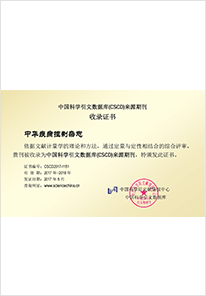2016 Vol. 20, No. 1
Display Method:
2016, 20(1): 1-4,12.
doi: 10.16462/j.cnki.zhjbkz.2016.01.001
Abstract:
2016, 20(1): 5-8.
doi: 10.16462/j.cnki.zhjbkz.2016.01.002
Abstract:
2016, 20(1): 9-12.
doi: 10.16462/j.cnki.zhjbkz.2016.01.003
Abstract:
2016, 20(1): 13-16.
doi: 10.16462/j.cnki.zhjbkz.2016.01.004
Abstract:
2016, 20(1): 17-20.
doi: 10.16462/j.cnki.zhjbkz.2016.01.005
Abstract:
2016, 20(1): 21-25.
doi: 10.16462/j.cnki.zhjbkz.2016.01.006
Abstract:
2016, 20(1): 26-29.
doi: 10.16462/j.cnki.zhjbkz.2016.01.007
Abstract:
2016, 20(1): 30-33,78.
doi: 10.16462/j.cnki.zhjbkz.2016.01.008
Abstract:
2016, 20(1): 34-37,41.
doi: 10.16462/j.cnki.zhjbkz.2016.01.009
Abstract:
2016, 20(1): 38-41.
doi: 10.16462/j.cnki.zhjbkz.2016.01.010
Abstract:
2016, 20(1): 46-48,53.
doi: 10.16462/j.cnki.zhjbkz.2016.01.012
Abstract:
2016, 20(1): 49-53.
doi: 10.16462/j.cnki.zhjbkz.2016.01.013
Abstract:
2016, 20(1): 54-57.
doi: 10.16462/j.cnki.zhjbkz.2016.01.014
Abstract:
2016, 20(1): 58-62.
doi: 10.16462/j.cnki.zhjbkz.2016.01.015
Abstract:
2016, 20(1): 63-66.
doi: 10.16462/j.cnki.zhjbkz.2016.01.016
Abstract:
2016, 20(1): 67-69,73.
doi: 10.16462/j.cnki.zhjbkz.2016.01.017
Abstract:
2016, 20(1): 70-73.
doi: 10.16462/j.cnki.zhjbkz.2016.01.018
Abstract:
2016, 20(1): 74-78.
doi: 10.16462/j.cnki.zhjbkz.2016.01.019
Abstract:
2016, 20(1): 79-83.
doi: 10.16462/j.cnki.zhjbkz.2016.01.020
Abstract:
2016, 20(1): 84-86,98.
doi: 10.16462/j.cnki.zhjbkz.2016.01.021
Abstract:
2016, 20(1): 87-90.
doi: 10.16462/j.cnki.zhjbkz.2016.01.022
Abstract:
2016, 20(1): 96-98.
doi: 10.16462/j.cnki.zhjbkz.2016.01.024
Abstract:
2016, 20(1): 99-100,106.
doi: 10.16462/j.cnki.zhjbkz.2016.01.025
Abstract:
2016, 20(1): 101-103.
doi: 10.16462/j.cnki.zhjbkz.2016.01.026
Abstract:
2016, 20(1): 104-106.
doi: 10.16462/j.cnki.zhjbkz.2016.01.027
Abstract:


 Email alert
Email alert RSS
RSS Abstract
Abstract PDF
PDF





